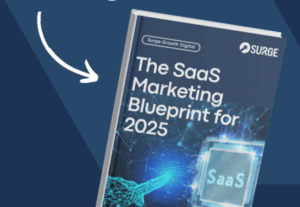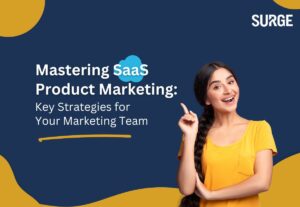What is a SaaS Content Marketing Strategy?
A SaaS content marketing strategy involves creating, publishing, and distributing valuable content designed to attract and retain customers for Software-as-a-Service businesses. By implementing a thoughtful approach, SaaS companies can generate leads, build trust, and foster long-term customer loyalty.
Understanding the Basics of SaaS Content Marketing
SaaS content marketing is distinct due to its focus on subscription-based customers. Partnering with a SaaS SEO agency can amplify efforts by ensuring content reaches the right audience. The primary objective is to educate potential customers about your product’s value while addressing their specific challenges.
Key elements include:
- Targeted Content: Develop content that answers specific customer queries.
- Distribution: Share content via blogs, social media, and email campaigns.
- Consistency: Maintain a regular publishing schedule to keep your audience engaged.
Key Components of an Effective SaaS Content Marketing Strategy
- Customer Persona Development: Understand your audience’s challenges, needs, and behaviours.
- Content Planning: Create a mix of blogs, case studies, and whitepapers.
- SEO Integration: Use keywords like “SaaS content marketing” and “content strategy for SaaS” to optimise for search engines.
- Performance Tracking: Regularly monitor and refine your strategy based on analytics.

How to Create a Content Calendar for SaaS
A content calendar is an essential tool for maintaining consistency in your SaaS content marketing strategy. It helps streamline the creation, scheduling, and distribution of content, ensuring your team stays on track and your audience remains engaged. Follow these steps to create an effective content calendar:
- Identify Content Themes – Focus on topics that align with your SaaS business goals and audience needs. Examples include product features, industry trends, customer success stories, and educational content addressing common pain points.
- Conduct Keyword Research – Use relevant keywords such as “SaaS SEO agency” and “SaaS content marketing” to guide your themes. Ensure content aligns with search trends to improve visibility and engagement.
- Schedule Posts – Plan a mix of weekly, bi-weekly, or monthly posts to ensure consistent engagement. Incorporate important dates like product launches, industry events, or seasonal trends to maximise relevance.
- Assign Responsibilities – Clearly define roles within your team, such as content creation, editing, design, and publishing. Assign specific tasks to team members to ensure smooth execution and accountability.
- Include Diverse Content Formats – Plan for various content types like blog posts, case studies, whitepapers, videos, and social media updates. This ensures you appeal to diverse audience preferences and maximise reach.
- Incorporate Analytics Reviews – Set regular intervals to review content performance and refine your calendar based on data insights. Use tools like Google Analytics or HubSpot to track metrics like traffic, engagement, and conversions.
By following these steps, you can create a well-structured content calendar that supports your SaaS growth goals while keeping your marketing efforts organised and efficient.
Why is Content Marketing Important for SaaS Companies?
Content marketing is crucial because it:
- Builds credibility and authority.
- Educates potential customers about complex software solutions.
- Drives organic traffic through SEO.
Engaging content helps establish trust, making customers more likely to convert and remain loyal.
The Benefits of Content Marketing for SaaS Businesses
- Increased Visibility: SEO-driven strategies ensure higher rankings on search engines.
- Lead Generation: High-quality content attracts potential customers.
- Customer Retention: Informative and helpful content keeps existing customers engaged.
How Content Marketing Impacts ROI for SaaS
Investing in content marketing delivers measurable returns by:
- Increasing website traffic.
- Improving lead-to-conversion rates.
- Enhancing customer lifetime value (CLV).
Why Quality Content is Key for SaaS Growth
Quality content demonstrates your expertise and builds trust with potential customers. To achieve this:
- Publish data-driven whitepapers and guides.
- Use storytelling to make your content relatable.
- Ensure all content is free of errors and easy to understand.
What Types of Content Should SaaS Companies Use?
- Blogs: Educate and inform your audience.
- Case Studies: Showcase customer success stories.
- Whitepapers: Provide in-depth insights and solutions.
- Videos: Explain complex concepts visually.
Different Types of Content Formats for SaaS Marketing
- Long-Form Content: Ideal for thought leadership and in-depth guides.
- Short-Form Content: Perfect for social media and newsletters.
Long-Form Content vs. Short-Form Content: Which Works Best?
Both formats have their advantages:
- Long-Form: Better for SEO and detailed explanations.
- Short-Form: Best for quick, digestible updates.
Creating Engaging Content for B2B SaaS Marketing
To engage B2B audiences:
- Focus on solving specific pain points.
- Use professional, concise language.
- Incorporate real-world examples and data.

How to Measure Content Marketing Success in SaaS
Key metrics to track include:
- Traffic: Monitor website visits.
- Engagement: Analyse time spent on pages.
- Leads: Track form submissions and demo requests.
How to Analyse the ROI of Your Content Marketing Efforts
Calculate ROI by comparing the cost of content creation and distribution against the revenue generated. Use tools like Google Analytics and HubSpot for detailed insights.
Tools for Measuring Content Marketing Effectiveness
- Google Analytics: Track website traffic and behaviour.
- SEMrush: Analyse keyword performance.
- HubSpot: Monitor lead generation and conversion rates.
What are Effective Content Marketing Strategies for SaaS?
- Personalised Content: Tailor content to different audience segments.
- Repurposing: Turn blogs into videos or infographics.
- Social Proof: Highlight customer testimonials and reviews.
Building a Content Strategy Tailored for Your SaaS Business
Your strategy should:
- Align with business goals.
- Address customer pain points.
- Include a mix of evergreen and timely content.
Integrating SEO into Your SaaS Content Marketing Strategy
Optimise your content with:
- Keywords like “SaaS blog marketing”.
- Internal linking to boost site navigation.
- Meta descriptions that encourage clicks.
Leveraging Existing Content for Maximum Impact
- Update Old Posts: Add fresh data and insights.
- Republish Popular Content: Give successful posts a new audience.
- Internal Linking: Connect related articles to enhance user experience.
How to Create Valuable Content for SaaS Audiences?
- Understand Your Audience: Use surveys and analytics to identify needs.
- Deliver Actionable Advice: Provide step-by-step solutions.
- Stay Relevant: Keep up with industry trends.
Best Practices for Creating High-Quality SaaS Marketing Content
- Use a consistent tone and style.
- Focus on clarity and readability.
- Test different formats to find what resonates best.
Conclusion
Content marketing is a critical component of SaaS growth. By developing actionable strategies, leveraging SEO, and delivering high-quality content, SaaS companies can drive traffic, generate leads, and retain customers. For expert guidance, contact Surge Growth Digital – The SaaS Marketing Agency Focused on Scaling Your Business.
FAQs
What is content SaaS?
Content SaaS refers to content marketing strategies specifically designed for Software-as-a-Service (SaaS) companies. These strategies involve creating valuable and relevant content that resonates with the target audience. The goal is to attract potential customers by addressing their needs, educating them about the software, and building trust. Content SaaS can take many forms, such as blogs, whitepapers, case studies, and webinars, all tailored to highlight the benefits of the SaaS product and guide prospects through the buyer’s journey.
What is SaaS in content writing?
SaaS in content writing is the process of crafting targeted and actionable content for SaaS businesses. This involves creating material that not only informs but also solves specific customer challenges. Effective SaaS content writing highlights the unique features of the software, demonstrates how it solves problems, and showcases its value through use cases and customer success stories. It aims to engage readers, answer their questions, and encourage them to take action, such as signing up for a demo, starting a free trial, or subscribing to the service.
What is the SaaS strategy?
The SaaS strategy is a comprehensive plan designed to achieve key business objectives for subscription-based software companies. This includes acquiring new customers, retaining existing ones, and driving recurring revenue. A strong SaaS strategy integrates various elements such as product marketing, content marketing, customer support, and user engagement initiatives. By focusing on the entire customer lifecycle, the strategy ensures long-term growth and customer satisfaction. Key tactics include leveraging SEO to attract leads, creating high-value content to educate and engage users, and implementing customer feedback to refine offerings and retain loyalty.






